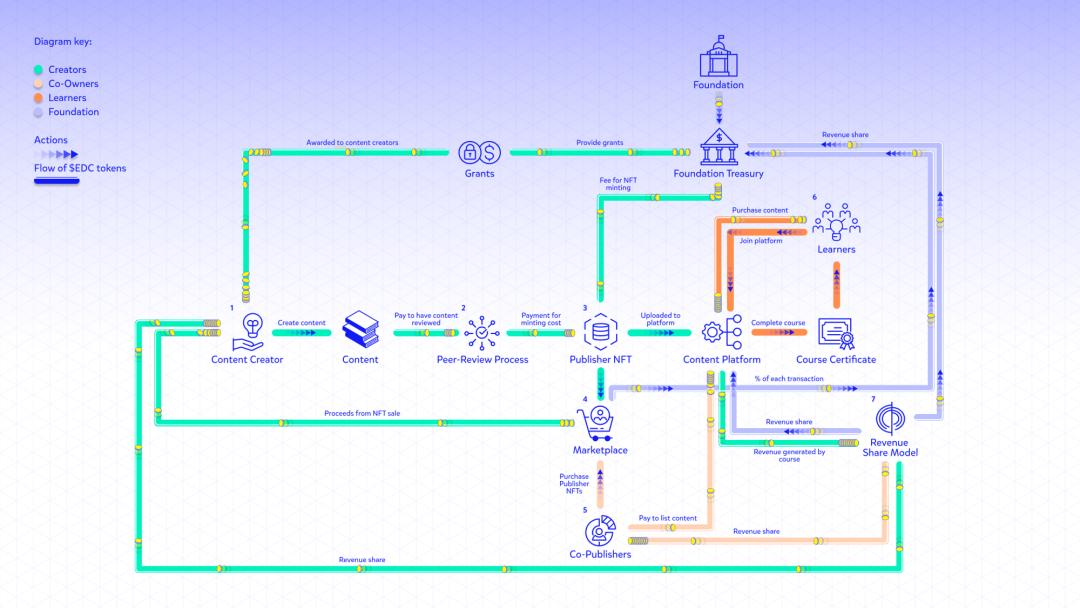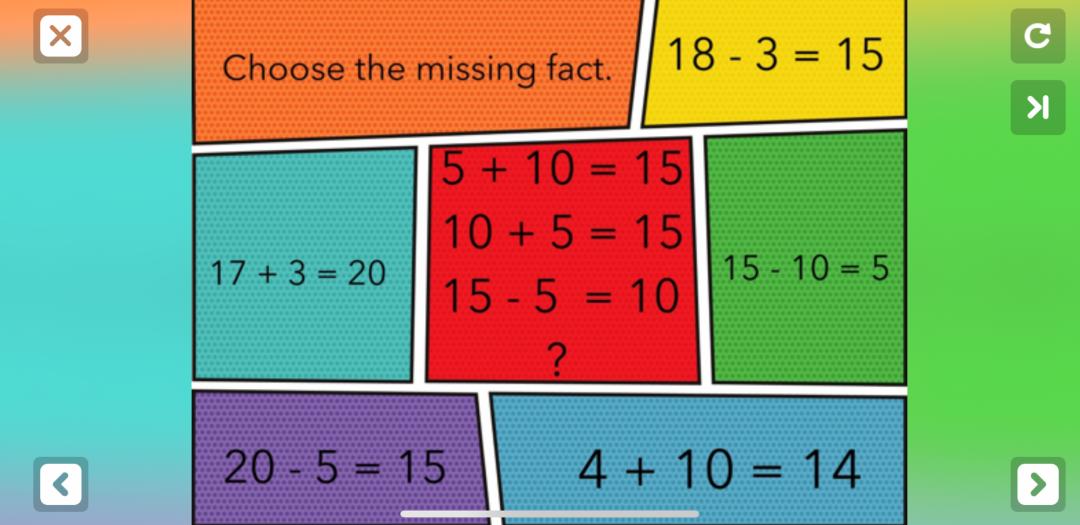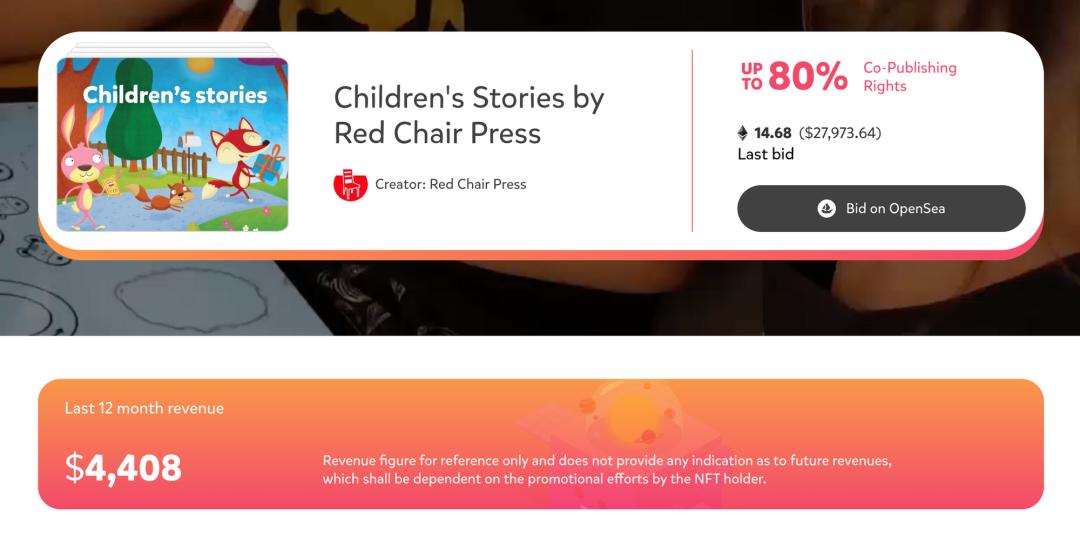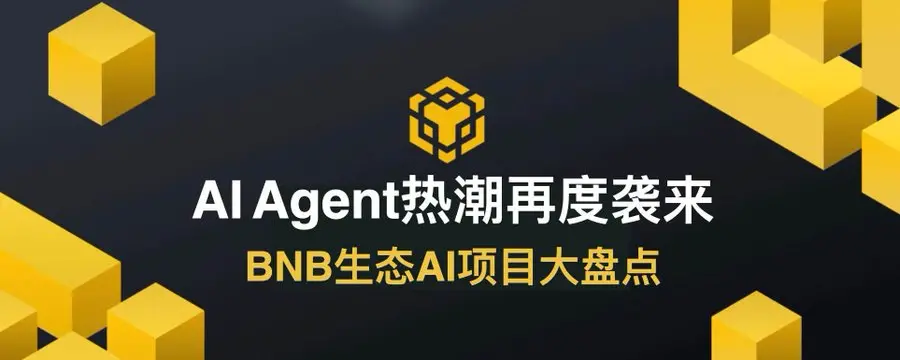In-depth analysis of Binance Launchpad project Open Campus (EDU)
Author: Lucky, Biteye
On April 21, according to an official announcement from Binance, Binance will soon launch its 31st Launchpad project, Open Campus (EDU), and open a special session for BNB. This sale will be based on an investment model, and Binance will determine the user's investment quota based on the average daily BNB holdings over five days.
The relatively unknown project Open Campus has suddenly entered the view of crypto users. So, what kind of project is this? What advantages does it have that are worth launching on Launchpad?
This article will analyze this IEO project, which focuses on the concept of an educational platform, from four aspects: 1) Protocol introduction; 2) Core partner introduction; 3) Token model; 4) Reflections.
1. Protocol Introduction
Open Campus is a decentralized Web3 education content platform. Its vision is to create a fairer education system using blockchain technology, providing new opportunities for educators to earn income. The platform raised $6 million in 2022 by selling 6% of its tokens, with a valuation of $100 million and a financing cost price of $0.1.
As an educational platform protocol, Open Campus aims to build a Web3 online course platform through the following process, with the goal of attracting more creators and learners to join the ecosystem:
1) Content creators generate educational content;
2) Content creators pay $EDU tokens to review their content;
3) Once peer reviewers approve the content, content creators can pay to mint their content into Publisher NFTs;
4) Then, creators can sell Publisher NFTs on the market to earn revenue minus transaction fees (which go into the EDU Foundation treasury), with these Publisher NFTs purchased by interested buyers;
5) Holders of Publisher NFTs, along with the platform and content creators, are responsible for promoting the content;
6) Learners on the platform can register, purchase courses, and receive certifications upon completion;
7) Revenue from Publisher NFTs is shared among the holders, content creators, the education platform, and the EDU Foundation treasury.

From the above process, it can be seen that essentially, Open Campus aims to enable educational content producers to turn educational content into NFTs, allowing teachers to obtain funding sources and subsequent income by selling their educational content, which is shared among NFT holders, creators, and the platform.
Core Partner Introduction
The first adopter of Open Campus is Tiny Tap. In June 2022, Animoca Brands acquired 84% of Tiny Tap for $38.9 million, making Tiny Tap essentially a subsidiary of Animoca Brands.
Tiny Tap is a UGC educational gaming platform from Israel, founded in 2012, focusing on providing educational content in a game-interactive format for children. Currently, the platform has over 250,000 interactive courses, primarily targeting young learners from preschool to sixth grade, and is gradually expanding to older age groups.
The Tiny Tap platform provides creators with easy-to-use creation tools, allowing them to create their own educational games. Here is an example:
Suppose a teacher wants to create a math game to help students learn addition.
1) Log into the Tiny Tap account and select "Create New Game."
2) Choose the "Addition" theme and set the game's name and cover image.
3) Add the first page of the game, set as an addition problem, such as "2 + 3 = ?".
4) Add interactive elements, such as text boxes or number cards, allowing students to input answers and interact.
5) Add feedback for correct and incorrect answers, such as "Congratulations! You got it right!" and "Sorry, that's not correct. Please try again."
6) Add more questions and pages for students to practice multiple times.
7) Once completed, the game can be published on the platform and shared with other users.
This is just a simple example; in reality, creators can use various elements and interaction methods to create their educational games to meet different learning needs and teaching objectives.


(Image source: Tinytap game course page, this image shows a course designed to help students understand addition and subtraction.)
Before being acquired by Animoca, let's take a look at Tiny Tap's original business model. After summarizing Tiny Tap's public information, we can roughly infer that Tiny Tap's business model is based on subscriptions, revenue sharing from the sale of educational content, and advertising income.
As follows:
Tiny Tap provides a free creation tool, allowing users to create their own educational games and upload them to the platform.
Tiny Tap has an educational game marketplace where users (parents) can purchase and use games for learning. Tiny Tap earns revenue from these sales, a portion of which goes to the creators.
Tiny Tap also offers a subscription service, where subscribers (content creators and parents) can access more games and features. Tiny Tap earns revenue from these subscriptions.
Additionally, Tiny Tap displays advertisements on its platform, generating income from advertisers.

From the announcement of Animoca Brands' acquisition of Tiny Tap, we can derive the following key information:
1) Tiny Tap is one of the top 10 best-selling children's apps in the US App Store, with over 8.2 million registered family users, more than 100,000 creators, and partnerships with several well-known publishers such as Sesame Street and Oxford University.
2) Tiny Tap is not a shell company; from 2019 to April 30, 2022, the company generated $17.6 million in revenue. (It should be noted that during these years, due to the pandemic, Tiny Tap's revenue may have seen some growth, but it is uncertain whether its service revenue can reach pre-pandemic levels after the pandemic.)
3) The cost for Animoca to acquire 80.45% of Tiny Tap's shares was $38.875 million in cash and stock, meaning that at that time, Tiny Tap was valued at approximately $48.32 million.
For content creators, their income in Tiny Tap originally came from three main sources:
1) Whenever a family purchases or renews a Tiny Tap subscription, the resulting subscription profit (i.e., subscription revenue minus customer acquisition costs) is shared with content creators. The amount earned by individual content creators depends on the engagement generated by their content.
2) Payments made by non-subscribing users who directly purchase educational games from content creators.
3) Platform rewards: Tiny Tap regularly organizes various competitions and events to encourage content creators to create better games, offering prizes and rewards to winners.
After Tiny Tap was acquired by Animoca in June 2022, the platform launched a sales model for Publisher NFTs as a new source of income for educational content creators.
Currently, Publisher NFTs have held two auctions:
The first auction in November 2022 generated sales of 138.926 ETH, of which 67.7 ETH (approximately $111,000 at the time of sale) went to teachers creating content related to NFTs. The second auction was held in December 2022.
The two auctions generated a total sales volume of 257 ETH, with 12 teachers earning income from the NFT auctions.
For buyers of Publisher NFTs, holding an NFT allows them to receive a share of the paid revenue generated by these educational contents on the platform, enjoying the benefits of the educational content being subscribed to permanently.
From the development of Tiny Tap, we can draw the following conclusions:
Tiny Tap provides a no-code educational creation and learning platform that enables educators to create and share interactive educational content and earn revenue shares when learners use that content.
The recently launched Publisher NFTs leverage Web3 technology and community to improve income opportunities for educators, allowing the community to directly support learning development while benefiting from it.

(Transaction prices of Tiny Tap's Publisher NFTs and the revenue generated by that NFT course content on the platform over the past 12 months)
Token Model
The governance token of Open Campus is $EDU, with a total supply of 1 billion, used for the following functions:
Governance: EDU token holders can submit DAO proposals for the protocol and vote on them (e.g., guiding the allocation of tokens to the ecosystem).
Payments: EDU can be used as a payment method for products and services offered by companies adopting the protocol (e.g., Tiny Tap, where a percentage of revenue will be allocated to the protocol).
On-chain revenue sharing: Contributors (including content creators, publishers, and the platform) receive a share of the protocol's revenue in EDU.
User acquisition: EDU can be used to incentivize and guide Web2 users to join Web3, as they can receive discounts when accessing products offered by protocol ecosystem partners (e.g., Tiny Tap).
Content ownership: Users can purchase co-publishing rights through Publisher NFTs with EDU.

The distribution is shown in the figure below:
 (Distribution chart of $EDU tokens)
(Distribution chart of $EDU tokens)
Reflections
From Binance's announcement, we can see that the price on Binance Launchpad is 1 EDU = 0.1 U, with an initial issuance of 14.5%, meaning that the market cap corresponding to this token price for Open Campus is $14.5 million, with a total market cap of $50 million;
https://research.binance.com/cn/projects/open-campus
When Open Campus raised $6 million in 2022, it corresponded to a valuation of $100 million;
The valuation of the first partner in the Open Campus ecosystem, Tiny Tap, is approximately $48.32 million;
Open Campus has also announced potential future partners, including Gems Education, an international private school with over 60 schools worldwide, whose revenue source is tuition fees, but how these two will collaborate in the future has not been announced by Open Campus.
From the IEO price of EDU, the $50 million market cap may be undervalued according to common bubble valuation standards in the blockchain industry. As for how much upward potential there is, it is difficult to estimate, but the fully diluted market cap should be in the hundreds of millions.
From the partner situation of Open Campus, it can be seen that its development plan is committed to collaborating with companies that have already established certain resources and users in Web2, combining their tokens and NFT models with these educational companies to provide more diversified income sources for platform and educational content creators.
However, whether this approach of empowering Web2 with Web3 is feasible, and if it is indeed feasible, how much help it will provide to educational content creators is still uncertain.
For creators on Tiny Tap, if their educational content is popular, they can already profit from subscription and paid income. Issuing Publisher NFTs seems more like selling part of the copyright, with subsequent income shared with NFT holders, essentially monetizing part of future income through the form of NFTs.
Whether this Web3 empowerment of Web2 can succeed, and whether this monetization model is a necessity, is still to be observed. This monetization model seems more like an embellishment, transferring and sharing risks, and those who pay need to hold an optimistic view of the future income that the educational content's NFTs can generate. Whether the ecosystem participants in the education platform are willing to take on this cost remains to be seen, and I currently hold a rather pessimistic attitude.
However, from another perspective, perhaps such projects will have a certain effect on the utility of NFTs in the popularization of Web2. Through the gradual penetration of major players into the Web2 industry, it may help people in various industries gradually establish an understanding of the crypto industry, laying a brick and a tile for the future true Mass Adoption.










